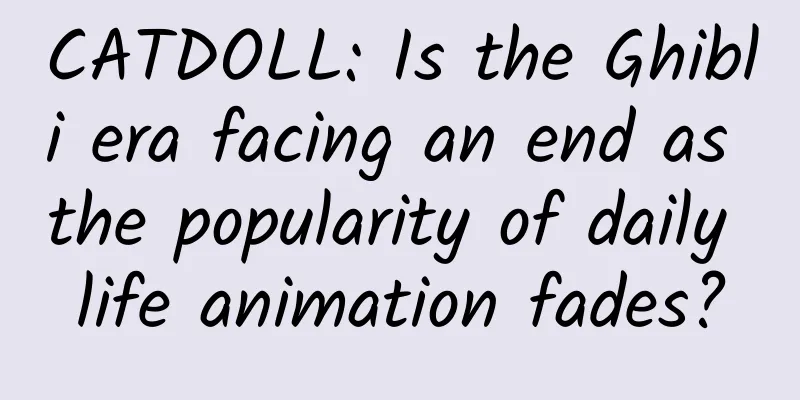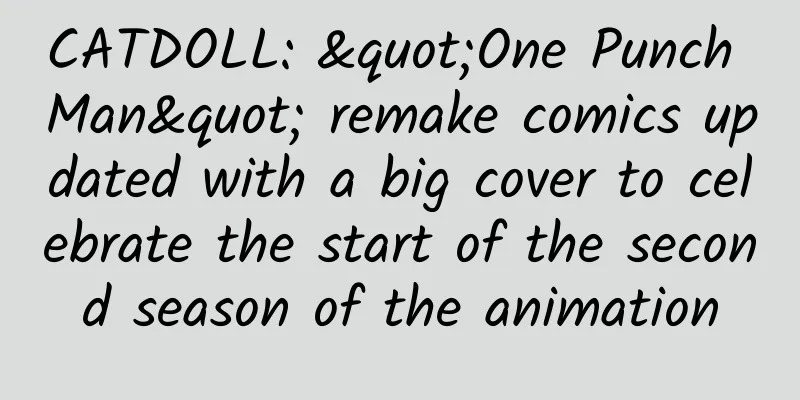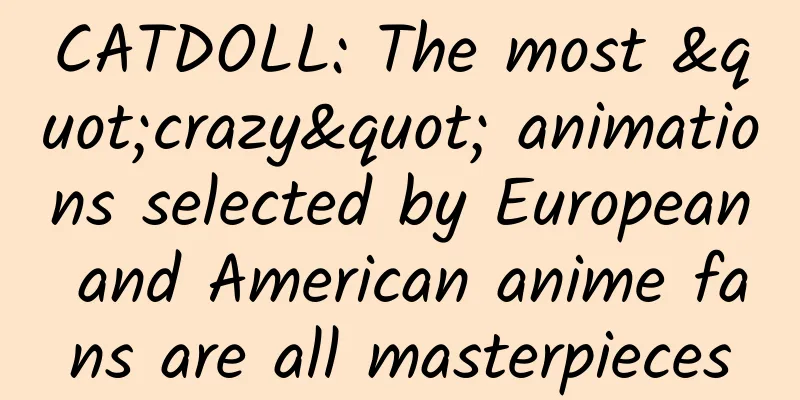CATDOLL: Is the Ghibli era facing an end as the popularity of daily life animation fades?

|
Everyone must be familiar with "daily life animation". Most of them are lighthearted and funny, with no big ups and downs in the plot. They describe daily life slowly, which makes people feel more involved. The best of them are the animation works of Ghibli, but the editor of "Movie Junpo" Toyoshi Inada is worried about the future of this type of animation and claims that the end of daily life animation is coming. Here is his review article: 2014 was a complicated year for the animation industry. Generally speaking, foreign animated films led by Disney continued to be a hot topic, while Japanese animation, although still maintaining a fascinating ecosystem, only a small number of excellent works were known to the general public. Most of the good works, even if they were of good quality, could only be spread among core animation fans. This time, let us review and deeply analyze the problems that have arisen in the animation industry in recent years and take a look at the new landscape of the industry. In August 2014, the film production department of Studio Ghibli announced its dissolution. One of the reasons was that Hayao Miyazaki's retirement made it impossible to continue to maintain a regular supply of theatrical works. In addition, Ghibli is a formal employee-based company that is relatively rare in the animation industry. The welfare of employees is very complete, and therefore it is overwhelmed in terms of operations. So what does the dissolution of Ghibli mean? Most industry insiders said that this will liberate Ghibli's animators and allow them to apply their abilities to various other works. However, some people refute that in the current industry dominated by TV animation, the faster pace and low pay make it difficult for Ghibli painters to perform at the highest level in the industry like Ghibli works. In the upcoming film directed by Mamoru Hosoda, "Monster Child", which will be released this month, it is said that many former Ghibli art masters such as Takashi Omori, Yohei Takamatsu, and Yoichi Nishikawa will participate. At that time, it will be seen whether the genetic genes of Ghibli will stimulate the overall level of the industry. Speaking of "Monster Child", let's take a look at its production lineup. The production lineup of "Monster Child" was created by Yuichiro Saito, a former producer of the old shop Madhouse, in 2011. Saito has been the producer of Mamoru Hosoda's works since "The Girl Who Leapt Through Time". MAPPA, which was established in 2011 by Masao Maruyama, one of the original founding members of Madhouse, also has a similar purpose. Just like this, in recent years, there are many examples of independent or relocated small studios from large studios. TRIGGER, founded by former GAINAX members, Studio Colorido, directed by former Studio Ghibli director Yojiro Arai, and Wit Studio, founded by former Production IG members, are all animation companies that were established in 2011-2012. There are several reasons behind this trend that are worth noting. First, veteran producers have been on the payroll, and opportunities cannot be transferred to the younger generation. This is also a common thing in general companies. Secondly, the producers left the organization because they wanted to participate in specific works or work closely with specific supervisors. In Saito's case, he decided to be independent in order not to disrupt the one-on-one system with Mamoru Hosoda. Although a certain TV animation series has received a good response, the original production company cannot produce a sequel for many reasons. The producer of the series can be independent from the original company to establish a new company and produce a sequel. The same producer can guarantee the quality of the work and can also accept a lot of work from the original company in the future. Such an ecosystem will undoubtedly shine after the dissolution of Ghibli.
The loose generation animator behind the black enterprise report Everything has two sides. In April this year, NHK reported that the average annual income of new animation producers was 1.1 million yen, pushing the sensitive topic of "the black animation industry" to the forefront. However, in fact, this figure comes from the "Animation Producer Reality Survey Report 2015" published by the Japan Animators/Performers Association. The so-called annual income of 1.113 million is limited to "animation connection" (STAFF responsible for making a series of actions connecting the original drawings, mostly by newcomers), while the average annual income of supervisors is 6.486 million yen, the total animation supervisor is 5.638 million yen, and the producer is 5.420 million yen. In general, it is not a high-paying job, but as long as you can leave a record, you can still make a living from it. In addition, if you want to become a freelance producer, you need to constantly hone your skills. For freelance painters, the foundation and speed of painting are the most critical factors.
However, in recent years, the wave of the relaxed generation (ゆとり代) has gradually swept the animation industry. In the past, if new practitioners could not reach the standard level, they could only resign in disgrace and move to other industries. But today's young people are not like this. They are not very likely to feel sad about their own lack of ability. If they don't draw well, they will probably go hungry if they don't pay 200 yen per animation connection. However, they live in their parents' house so it's not a problem. Such young people with no ambition have been increasing in recent years. There are also many young people who volunteer to become production assistants but don't even understand the outline of the work of production assistants. There are also many young people who have the mentality of students who learn to draw while working. In addition, many reports say that in recent years, in order to pursue efficiency and cost, most animation connection or coloring work has been handed over to overseas companies. In this way, the number of practitioners in Japan will be further reduced, leading to the hollowing out of the animation industry. But at the root of it, the cultivation of animation talents is the primary problem.
Will the current production system end in 5 years? Then let's look at the trend of works. "Daily life animation is facing its end" is a statement from an animation critic. The so-called "daily life animation" refers to works that feature many beautiful girls and depict their ordinary daily lives. The earliest start was "Lucky Star" in 2007, and such works have emerged one after another until its momentum temporarily slowed down in 2015. Most of the characters in daily life works are occupied by "moe elements", so their commercial target must also be the so-called "moe pigs". "Moe pigs" are a type of otaku who love moe-specific characters very much, and they are also the main force of spending a lot of money on limited edition BDs or peripheral products. However, due to the reduction of daily life works, the moe pig business method is coming to an end. Replacing daily life works are youth group portrait works that anyone can easily enjoy, such as "We Still Don't Know the Name of the Flower We Saw That Day" in 2011. Although this method allows more ordinary people to access the works, it can no longer squeeze out super high single-person consumption through moe pigs.
In other words, the capital recovery of animation works has changed from short-term returns to long-term returns, but it didn't work well last year. The overall revenue from distribution and sales of peripheral products, event income, etc., has not been able to make up for the deficit. Even so, the number of newly produced animations is increasing. It is reported that the production cost per episode of TV animation has even decreased to a certain extent compared to 2005-2006. In addition, although the number of theatrical animation releases is increasing, the number of viewers is continuing to decrease, which has led to a tendency for the budget of theatrical animation to shrink. According to industry insiders, even the popular "The Wind Rises" has only achieved a balance between income and expenditure. Some time ago, Director Hideaki Anno publicly stated in an interview: "The current animation production system is in danger, and it is only a matter of time before it collapses. It will not take 20 years, but only 5 years." This statement is not groundless. "Large animation studios will indeed survive, but small and medium-sized studios that only rely on one or two large studios will face a crisis." The words even reveal a sense of "not even 5 years are needed."
Audience spending can save the industry!
Due to the development of the Internet environment, copyright infringement has occurred, and Ghibli has lost its production capabilities. The industry's stamina tank is about to hit the bottom. I have to emphasize again that it is time for the animation industry to forget Hayao Miyazaki! "The next generation should not continue to remember or look for Hayao Miyazaki. It would be better to make more works like "Love Live!" that can be purely enjoyed by the audience, so that the funds can be turned around." Although this is a very extreme opinion, the words are rough but the truth is true. Works that cannot be recognized by the audience will die no matter how meaningful they are. On the other hand, works that truly pursue artistry are also constantly being born. Although the box office of "Miss HOKUSAI" directed by Hara Keiichi, which was released in May, was not satisfactory, it is indeed a good work that combines the research of the times and high-quality drawings. In terms of type and content, the production team of "Miss HOKUSAI" must have anticipated that the box office would be bleak, but we should cheer for Production IG, which produced this work. Japanese animation can reach such a level and can be released as a commercial work. In other words, it is an investment in the future. "In This Corner of the World" directed by Sunao Katabuchi, which will be released in 2016, is also a work that has nothing to do with the cute pig business method or "pure enjoyment animation".
Many people think that spending money on hobbies is a stupid thing, but it is not. It is absolutely correct to spend as much money as you can on the right things. The animation industry is like an engine, and every penny of the audience is like gasoline, which contains the energy to drive "Japanese animation". Spend money on animation. Only by doing so can you continue to see interesting animations five or ten years later. (The words and sentences quoted in this article are from the current first-line producers or critics in the industry)
|
Recommend
CATDOLL: Fight with Kaneki in "Tokyo Ghoul" and launch a game
According to the news in Weekly YOUNG JUMP No. 8,...
CATDOLL: The power of faith is too terrifying. "Sonoda Umi" tops NHK's hot search terms
Yesterday (March 15) was the birthday of Umi Sono...
CATDOLL: The official website of the domestic animation "Hinabee" has been leaked! It will be broadcast on the entire network on July 23
Previously, we reported that the broadcast inform...
CATDOLL: The new generation of F4 is here! The comic "Meteor Garden" is restarted after 12 years
Many girls watched numerous Taiwanese idol dramas...
CATDOLL: The animation "This Man, Who Works as a Magician" was broadcast on February 5, 2016
The fifth episode of "This Man" "T...
CATDOLL: Voice actress Nitta Emi's vocal cord nodules are recovering well
Earlier this year, voice actor Nitta Megumi annou...
CATDOLL: "Attack of the Lucky Cat" appears in Japan. Is it a foodie or a cute creature?
In recent years, Japan has been experiencing a &q...
CATDOLL: Height comparison of the main actors of Kamen Rider Heisei, the shortest of Gaim and the tallest of Sword
Recently, the topic about the height of the Kamen...
CATDOLL: The animation "SuperShortComics" is expected to be broadcast in the spring
The director of this work will be Keisuke Matsumo...
CATDOLL: The final episode of the "Naruto" movie, the color picture of Sasuke with a broken arm is revealed, and Kakashi wears the Sixth Hokage robe!
The movie "Naruto: The Last - Naruto the Mov...
CATDOLL: The powerful influence of "Love Live!"! The voice actor recommendation store is crowded
The "Love Live!" project held the first...
CATDOLL:PAWORKS×Key's new work "Charlotte" second PV released
After announcing the main character designs and st...
CATDOLL: The 12th anniversary commemorative art book of Blackstar Red and White will be released and will include the new chapter of "Kino's Journey"
The commemorative art book specially launched to ...
CATDOLL: "Kung Fu Panda 3" releases new poster, Po shows off his "dumpling" skills again
The animated film "Kung Fu Panda 3" wil...
CATDOLL: Masashi Kishimoto: I will only pursue art in the future, not draw comics just for the sake of drawing comics
"Naruto" has come to an end, and there ...









